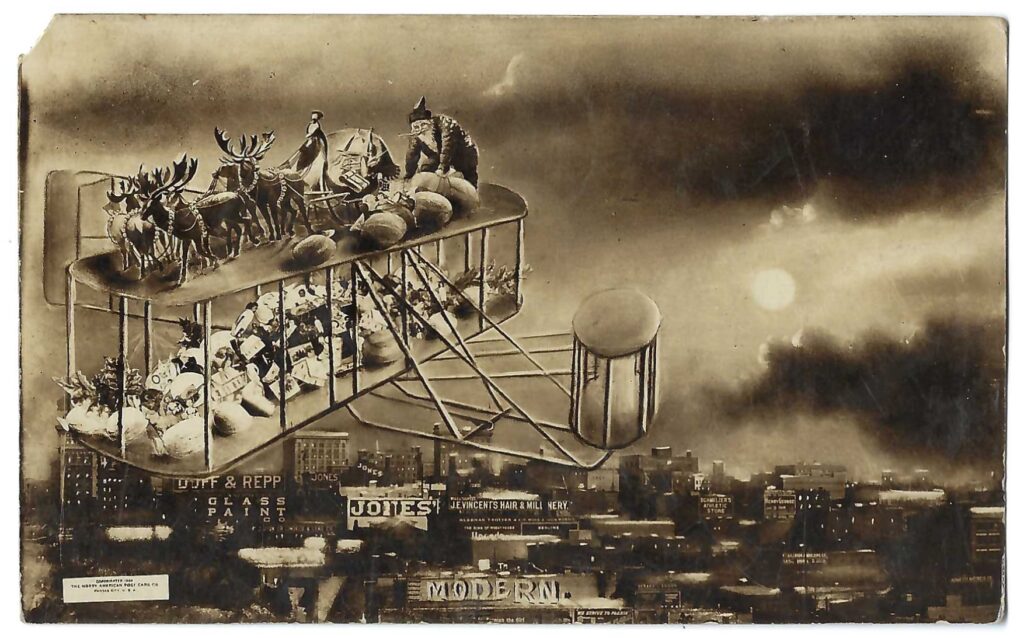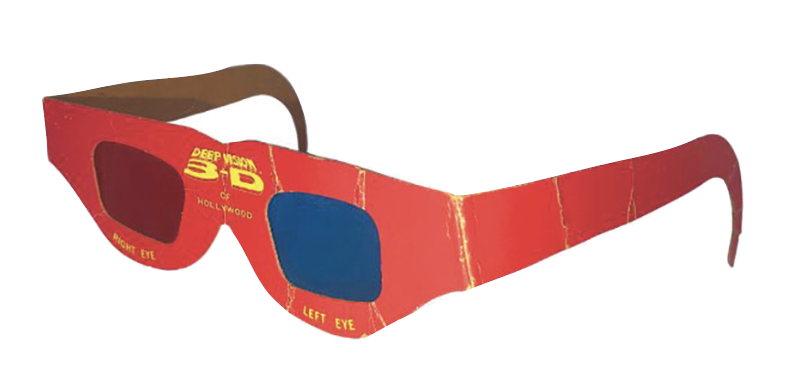
What could be more festive than Santa Claus himself, along with his team of reindeer, on the wings of an early Wright Flyer airplane, laden with bags of presents flying over downtown Kansas City? Signs for noted Kansas City retailers such as Duff and Repp, Jones and J.E.Vincent’s Hair & Millinery can easily be seen as Santa sorts packages on the upper wing, his team of four reindeer at the ready.
The box in the lower left portion of the picture notes the 1909 copyright and the publisher’s mark for North American Postcard company of Kansas City, Mo.
Picture postcards reached their zenith during the early to mid-20th century, mostly earlier than 1915. They remained a popular communication tool, however, through WWII and beyond, right up through the mid 1950’s when more modern technology made it easier to stay in touch.
Immediately following the turn of the 20th century, photography studios were common on the streets of downtown Kansas City. Moon Photo Postal Studio at 17 E. 12th St., The North American Postcard Company located at 1016 McGee and the Curio Post Card Studio at 112 E 8th St. were just three photography studios downtown that specialized in novelty and exaggeration type picture postcards.
The photo process was often very simple, with a decorated backdrop and props. They could be as involved as gluing a series of different negatives together in the dark room. In this case, a close up picture of the Wright Flyer was superimposed over the skyline scene of Kansas City. The picture of Santa, the bags of toys and the sleigh and reindeer was superimposed onto the wings of the airplane giving the illusion of flight.
W. H. “Dad” Martin was considered the father of exaggeration postcards that featured huge vegetables or animals and miniscule human beings in the same picture. Martin was born in Illinois in 1865. City directories list him as a photographer with E. H. Corwin in 1886. Martin bought out Corwin in 1894 and in 1908, published his first exaggeration postcard, closing the cabinet photograph studio a year later in 1909 to focus on what had become a booming postcard business, printing upwards of 10,000 postcards per day out of the small studio on Main Street in Ottawa.
Some of Martin’s better work featured huge ears of corn, giant apples and peaches, stalks of wheat taller than any man, and massive pumpkins uprooting a farmstead. Such cards were hugely popular throughout the Great Plains states where agriculture was the life’s blood of rural America.
Martin sold the business in 1912 to two Ottawa residents, William Fallis and William Jones who moved it to Kansas City under the name of the North American Postcard Company, specializing in Real Photo picture postcards.


















